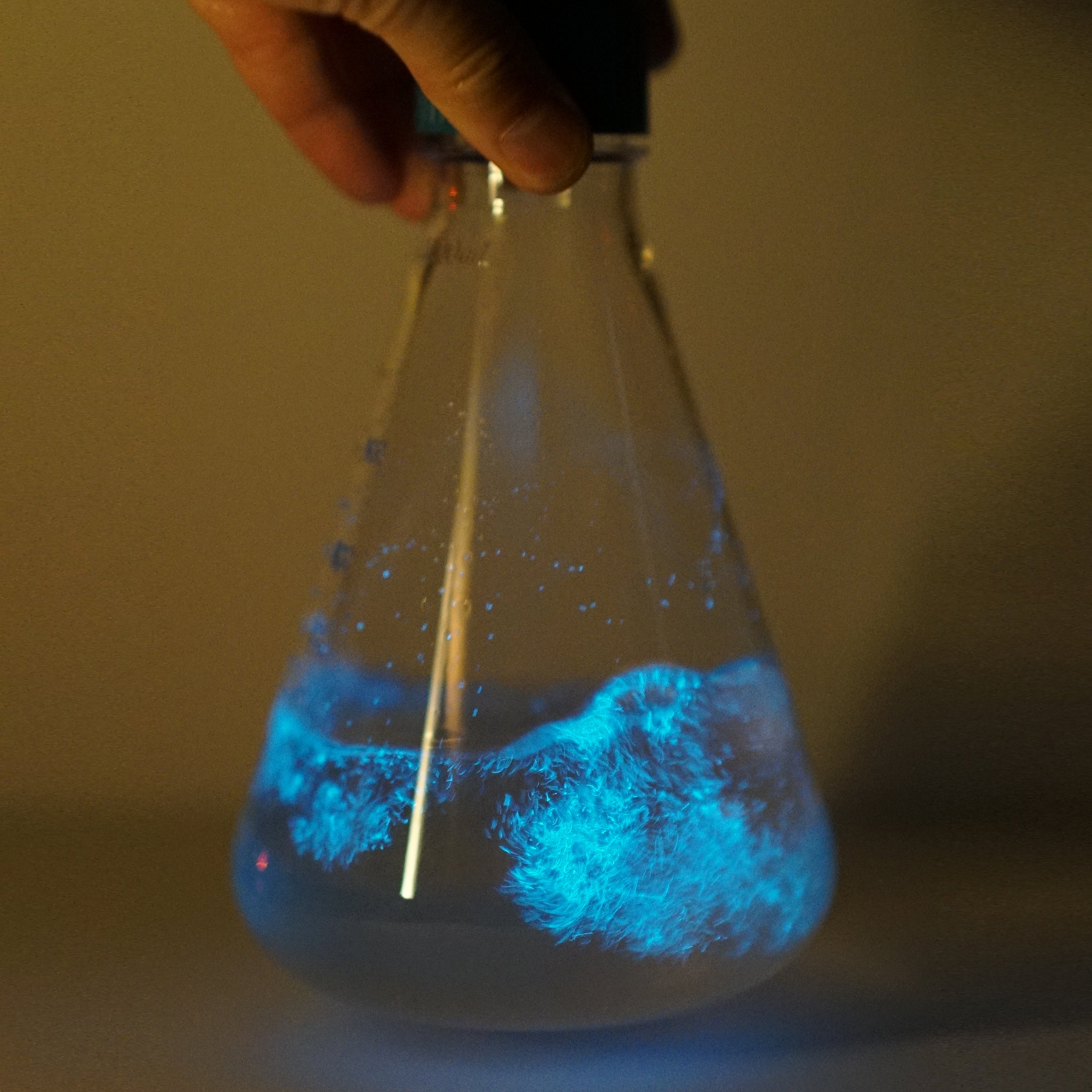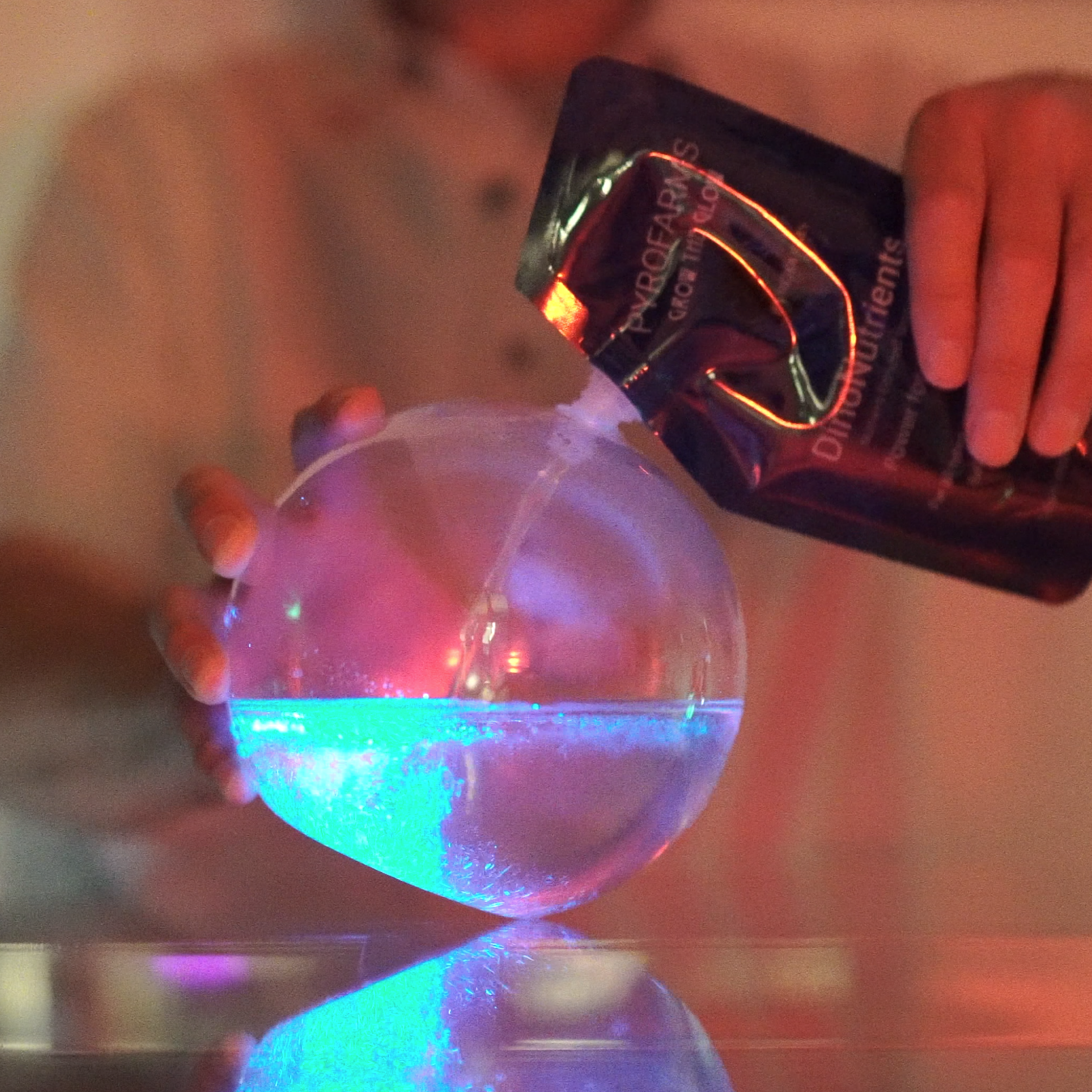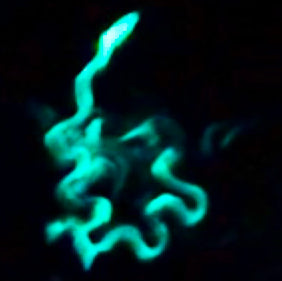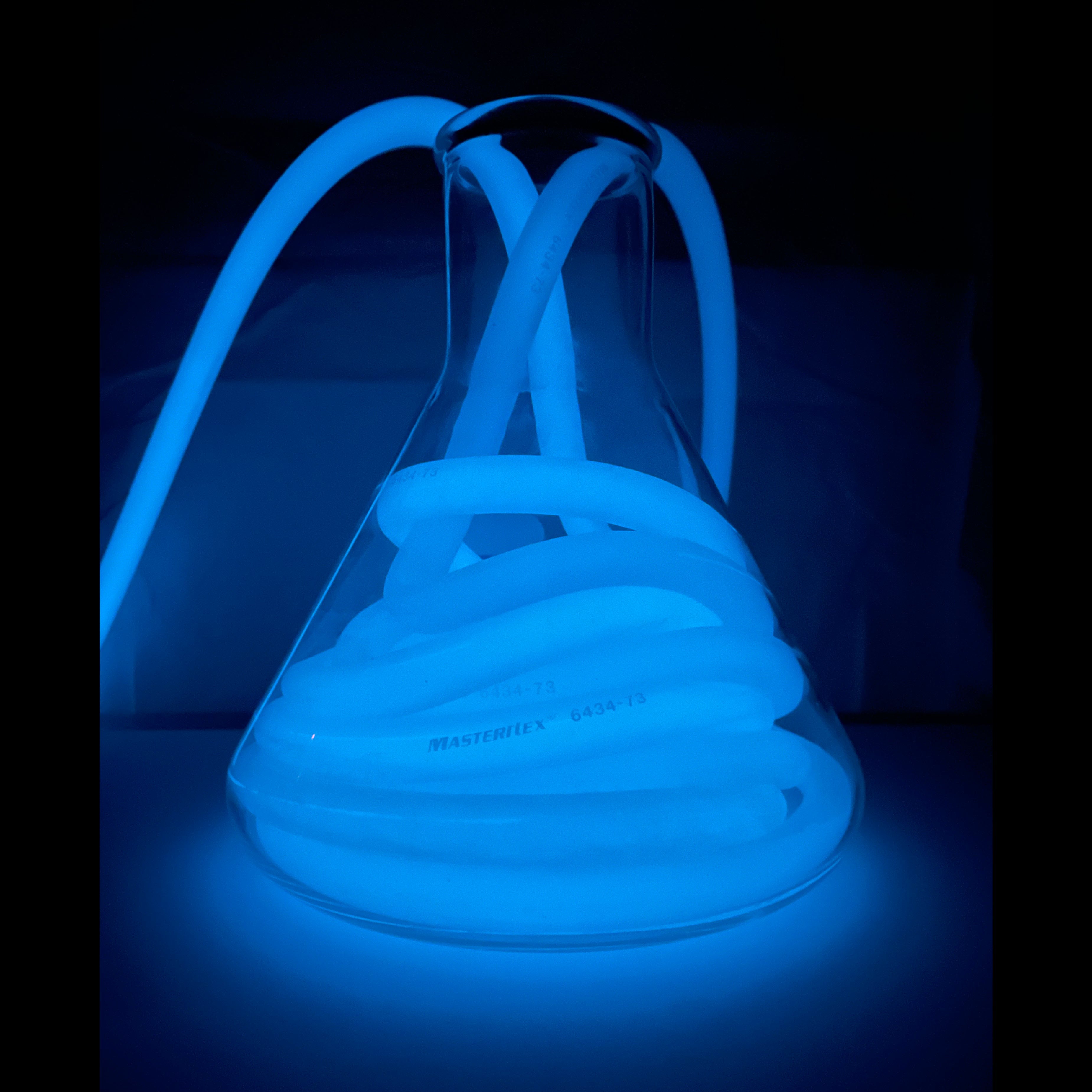Grow Your Own Living Light: A Guide to Cultivating PyroDinos

In this guide, we break down everything you need to know about cultivating these tiny wonders, from setting up the perfect environment to watching them glow with vibrant blue light at night. Whether you're a science enthusiast, educator, or just looking for a unique and mesmerizing addition to your home, this post will inspire you to bring living light into your life.
PyroDinos are a marine phytoplankton named Pyrocystis fusiformis. They are plant-like plankton or microaglae. PyroDinos are phototrophic (use sunlight as their primary energy source) and can also be classified as single-cell microalgae or simply 'algae.' Our PyroDinos are grown under LED lights and filtered sunlight on our Algae Farm in San Diego, California. One PyroDino cell was isolated off the coast of San Diego in 2009; from this single cell, all our PyroDinos were grown.
PyroDinos can be added to a saltwater aquarium or a reef system. They are non-toxic phytoplankton and will be snacks for most aquarium inhabitants. They may also be removed by mechanical filtration.
Growing PyroDino dinoflagellates is a lot like taking care of a houseplant. After all, dinoflagellate cells are classified as plant-like cells. Dinoflagellates can be grown in almost any clean, clear container, emphasizing clean.
CONTAINERS
Most household water bottles, glass jars (mason), flasks, and vases can be used. Here are the simple requirements:
1) The container is clean and free from soap, detergents and contaminants.
2) The container has a lid or loose cover that prevents contamination and significant evaporation.
3) The container is transparent and allows a good amount of light to penetrate the container.
Low and wide containers work better than narrow and tall containers. PyroDinos prefers a large surface-to-volume ratio. A container like a Flask is ideal, with a wide surface area and narrow opening.
Cleaning: To clean a container, use a small amount of household dish soap and rinse thoroughly. For effective decontamination, bleach can be diluted to a 1/50 solution with tap water. An optimal wash with dish soap followed by filling the container with a diluted bleach solution is recommended. Again, rinse thoroughly. Do not use full-strength bleach. Rinsing the container with a small amount of DinoNutrients is recommended before pouring your dino culture into the container.
For containers made entirely of glass, an oven can sterilize them. About 30 minutes at 400F should do the job.
A water bottle that has been poured out (into a glass or other container) should be clean enough to start a new PyroDino culture, as long as no one has directly drank out of the container. Again, it's best to rinse the bottle with a small amount of DinoNutrients before populating.
Cover: A lid or cover that allows some air exchange but protects from dust and debris should work fine. Sealed containers will work as long as they are opened once every week or two for air exchange.
Clear: Most bottles and jars that are not heavily tinted should be adequate for growing PyroDinos. Clean clear plastic bags (like freezer bags) can be also be used.
PyroFarms' Containers:


LIGHTING
Place your PyroDino container in a location where you would keep a leafy houseplant. Filtered sunlight or indirect sunlight is perfect. Supplemental room lighting is recommended in areas with low sunlight (wintertime, extended cloudiness). LED light strips or bulbs can be used with an outlet timer for advanced care and culturing. These can be typical broad white spectrum LEDs or the 'grow light' kind. Either will work fine. Fluorescent and even some incandescent lights will work as well. Ensure the light does not add heat to the PyroDino culture container. If the container is heated significantly by the light, move container away from the light source until the heat transfer is minimal. Note – some direct sunlight in the early morning hours or late evening is fine as long as the light does not add heat to the container.
PyroDinos have a circadian clock that helps them discern daytime from nighttime. PyroDinos collect light energy during their' day cycle' and produce bioluminescence during their' night cycle.' PyroDinos will not make light (bioluminescence) during their daytime cycle. Steady changes to their light conditions will change their day and night cycles. They can sustain day cycles of up to 20 hours (of light) and should never have less than 8 hours of light in their day cycle.
Changing their day and night cycle (circadian clock) is easy. You will need an LED light, a light/outlet timer and a relatively dark location during daytime hours. Program the light timer to provide light during nighttime hours (from 10 to 14 hours of light) and keep the PyroDinos in darkness during the day. You should see changes to their circadian clock (day and night cycles) after a couple of days. After a week, the change in their cycle should be complete.
Lighting Options:
FEEDING
PyroDinos are grown in DinoNutrients and Blue Boost DinoNutrients (filtered purified Seawater with added nutrients). PyroDinos can survive for several weeks, even months, with nothing but daily light. For optimal long-term health and to expand your culture (grow more PyroDinos), you should add more DinoNutrients (feeding). 'Feeding' is akin to feeding a plant, recommended for optimal health but not altogether necessary for survival.
Maintenance Feeding. Maintenance Feeding is intended when you want to keep your current volume of PyroDinos and do not want to expand their volume. It's simple: pour some DinoNutrients into your container every two weeks, swirl and pour the same amount out or down the drain. With Maintenance Feeding, you are providing more space for the PyroDinos to divide. It's like mowing a lawn. You are not killing the lawn; just providing more space and light for the new grass to grow. Do not feed a PyroDino culture unless you see visible brown aggregation (thin line) at the waterline. This is a sign of good health. If you do not see this thin line emerge after a week, change the PyroDinos location and lighting conditions.
Expansion Feeding. Want to make more PyroDinos? Here is how. Start with a larger container or several containers. After about a week, when you observe a visible brown aggregation (thin line) at the waterline, double the volume of your PyroDino culture with DinoNutrients. Swirl the PyroDino container to distribute the PyroDino cells evenly during daytime hours. Add DinoNutrients from ½ to the full amount of the current volume of your PyroDino culture. Example. If you have three pouches of PyroDinos (600ml) in a container that can hold approximately 1.5 liters (1500ml), and the PyroDinos are displaying the thin line at the waterline as described, add anywhere from 300ml to 600ml of DinoNutrients. Wait at least 5 days until you can do this again with a higher volume of DinoNutrients. And again – look for the thin line around the waterline before you do so.
Do not over-dilute a PyroDino culture. These cells grow best at higher densities and struggle at lower densities. Never add more volume of DinoNutrients than the total volume of PyroDinos.
Support Products: LINK
OTHER CONSIDERATIONS
Moderate temperatures are recommended. 9C to 31C (48F to 88F). The ideal temperature is 20C (68F).
Severe temperature swings should be avoided. Try not to place your container near a window or vent where temperatures can swing dramatically. South-facing walls, windows and shelves near vents can cause severe temperature swings even while room temperatures remain somewhat stable.
Do not over-dilute a PyroDino culture. These cells grow best at higher densities and struggle at lower densities. Never add more volume of DinoNutrients than the total volume of PyroDinos.
Leave in a single location day and night. Once you find a location where you see the visible brown aggregation (thin line) at the waterline, leave the container in this location. Moving the container daily can confuse the PyroDinos' circadian clock. It's best to let them seek a steady rhythm of light and dark that can be repeated day and night for optimal health.
Do not add tap water, unfiltered or untreated ocean water, or any liquid besides DinoNutrients. Artificial Seawater can be used for significant expansion projects where DinoNutrients are not feasible, and volumes are greater than 10 liters. Please follow Artificial Seawater instructions and make sure the Artificial Seawater has the correct salinity and is sterile. PyroFarms recommends supplementing Artificial Seawater with DinoNutrients to add buffering agents and nutrients. Please contact PyroFarms for bulk purchases of DinoNutrients and more guidelines around large-scale expansion.



Comments
Maria Davila —
This freaking amazing!